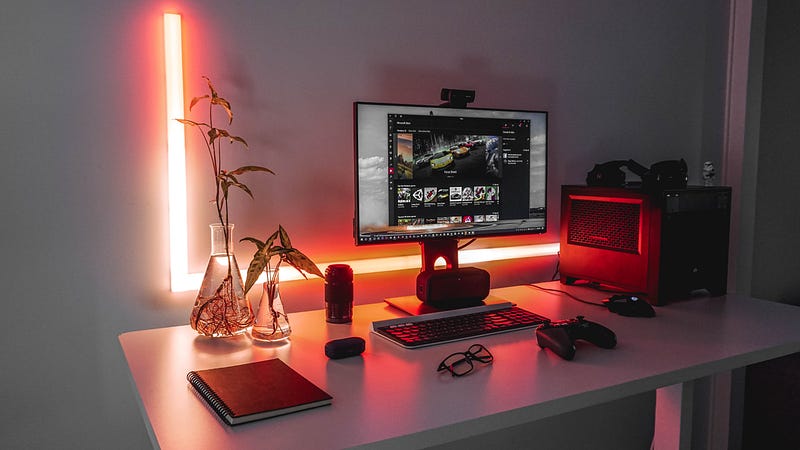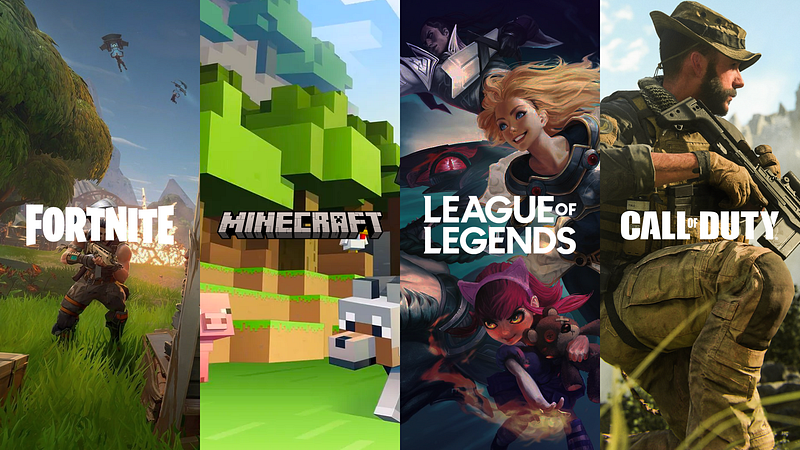
The gaming industry continues to surge to unparalleled heights, surpassing the music and movie sectors in terms of influence and revenue. Gone are the days when CMOs, brands, and agencies didn’t know the difference between Fortnite and FIFA, Minecraft and Mario.
Brands are now investing a significant percentage of their marketing budgets towards in-game advertising. However, many advertisers treat in-game advertising as one single black box to pour ads into without realizing the complexity and differentiations of the gaming world, which is leading to poor ROI.
Addressing these shortcomings is imperative to ensure media spend is allocated effectively to drive high-impact, long-term results with the right audience at the right time.

1. Unknown Games vs Premium Titles
Due to the nature of how the in-game advertising market has evolved, scale is everything. Unfortunately, this has meant many in-game ad-tech platforms have raced to onboard as many new titles as possible in order to offer more reach than their competitors, often to the detriment of quality.
Chances are, many of the games your ads have been seen on are unknown “hyper-casual” mobile titles, often low quality in terms of audience and segmentation data. Unfortunately, reaching a certain impression count from a media buy can become quite an ugly numbers game. A good comparison here is the difference between buying display ads on a collective of unknown news websites that farms clicks and traffic through poor quality “click-bait” articles vs buying display ads on Vogue Magazine. Much like online publications, not all games are created equal, and as such, not all audiences are either.
Whilst there is certainly a danger of associating your brand with an untrusted and unknown game title, the more compelling point to illustrate is the power of premium inventory. Activision Blizzard Media’s recent IAB article addresses this directly with real data on the fandom of established game titles, with Call of Duty fans being 3x more likely to think a brand was premium if it advertised in the game:
“By leveraging media with a fandom, marketers have the opportunity to “borrow” the affinity that fans have and apply it towards a brand. Informally. This means leveraging a “halo” effect — wherein marketers drive affinity for a brand by being within the halo of passion fans have for their media.”
Of course, game fandom can be defined in many different ways. However, it’s clear that placing ads in an established title such as Fortnite or Call of Duty is going to generate a far more impactful brand uplift than placing the same ad inside “Goofy Golf” on mobile that’s rated 2/5 on Google Playstore.
The challenge for advertisers used to be that gaining access to this more premium inventory came at a premium cost, but this is no longer the case. Ad-tech platforms like Overwolf Ads now allow brands to serve ads to over 42M monthly gamers across hundreds of premium game titles such as Call of Duty, Fortnite, Minecraft, League of Legends and more through our own innovative tech stack and creative ad solutions, at a very low cost and minimal set-up time.
2. Active vs Passive In-Game Advertising
Digging deeper into in-game advertising, the general rule has been serving “passive” ads into the background of mobile games, usually on the peripheral edges of the main gameplay.
Take a racing car game, for example. Your ad may be viewed on digital billboards as a player’s car swerves around a race track. Much like a traditional display ad unit next to a digital article on a website, it’s passive in nature, hoping to catch the eye of a user as they’re scrolling through an article.
In the world of gaming, this takes on an even stronger meaning, where a player has true “tunnel vision” directed towards the critical events of the game itself. The problem here is that whilst ads may technically appear to have close to 100% viewability, there’s still a question of how many players actually saw and engaged with your ad outside of their peripheral vision.
Advertisers are getting smarter by conducting post-campaign brand uplift and awareness studies. However, a clearer way to ensure a post-campaign measure of viewability is truly meaningful is by moving from passive to active ad placements within games.
Here, the real sweet spot is in-play advertising. Rather than passive ads hiding in and around gameplay using digital billboards, what if your brand could actively become part of the gaming experience in a more tangible way that enhances a player’s experience?
Adtech platforms such as Overwolf have become an intermediary platform that allows brands to access hundreds of the biggest and most trusted premium game titles (from Fortnite to Minecraft and League of Legends) and trigger ads during specific playtime moments in-game in a uniform way.
API technology shared by the major game studios now allows platforms like Overwolf to recognize when a major in-play moment occurs (a goal, a kill, a win, a loss, etc) and trigger contextual ads seamlessly that build on the emotions a gamer is feeling in real-time. Moreover, it’s low-cost, quick to set up, and scalable across thousands of games, so you can test which gamer segments and titles work best for you.
3. Size Matters…
This final point may seem arbitrary when considering the huge swaths of advertising focused on mobile, but the size of your ads matters. And if the cost and size of reach are similar, why run ads on a phone screen when you can run ads 10x the size on a PC screen?
Considering the millions of avid gamers playing hours and hours on PCs, the real estate is simply bigger and more impactful. What’s more, PC gamers are a much more dedicated crowd, spending many more hours on average in dedicated game sessions, as opposed to killing some time in transit on trains or, dare we say it, the lavatory. In addition, by nature of playing games on a gaming PC, the size of their wallets tends to be bigger too.
Of course, this point is contingent on the cost and size of reach being similar to that of mobile in-game advertising solutions. With platforms like Overwolf Ads offering exactly this on the most trusted and premium game titles in the world, it should be a no-brainer to add to your marketing mix to help improve your campaign performance.
If you’re interested in hearing more about how Overwolf Ads could help your brand reach gamers, head here or email us at ads(at)overwolf(dot)com.